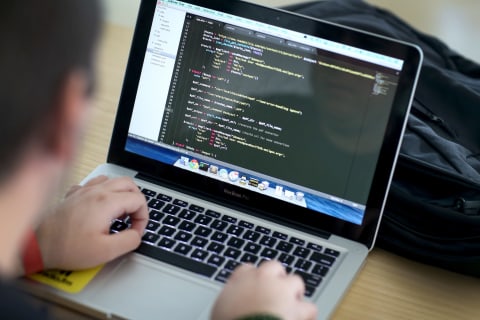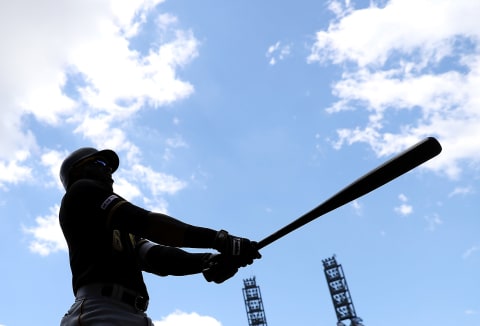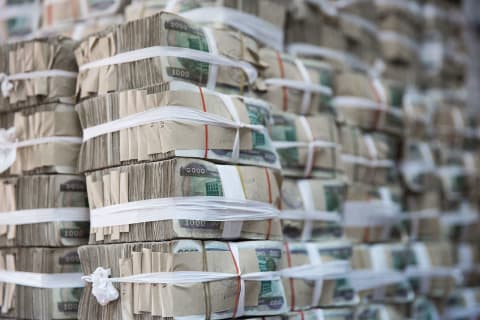How Atlanta Braves prospects fared in MLB.com’s updated top 100


It’s no surprise that the Atlanta Braves have some highly ranked young prospects. Will the Braves continue to stock up on talent or could we see some big moves in the next few days?
Despite this current time period the Atlanta Braves and 29 other MLB organizations are in — the stretch run leading up to the July 31 trade deadline — there’s been a lot of activity regarding prospects, more specifically, the ranking of prospects, over the last 4-6 weeks.
Last week I wrote about ESPN’s latest top 50 list — a midseason update by Keith Law; and I also included various other sites within the industry, such as FanGraphs, Prospects Live, Baseball Prospectus, and MLB.com’s MLB Pipeline.
At the time, MLB.com’s list had not been updated, as it was a ranking released in May. And if you recall, their list was the best of that group in terms of how accurate their rankings were regarding the Atlanta Braves.
Well, as you’ve most likely determined from the title of this piece — they’ve released an updated version. And in my opinion, it’s a dandy.
There are two things that are worth looking into: MLB.com’s updated top 100 list as a whole, and also their newest ranking of the Atlanta Braves top 30 prospects.
Both lists are important, not just because it gives us all something to argue about, but because a player’s ranking impacts what kind of trades the Atlanta Braves can make.
And I shouldn’t have to tell you how meaningful trading is right now for the Atlanta Braves. They’re currently in the thick of it as I write this.
That gives us plenty to look at here: How did the Atlanta Braves prospects do as an organization, compared to other teams? And what kind of changes have occurred within the Braves’ farm system and their own prospect rankings?
We’ll look at both of those subjects and I’ll provide my own two cents as well. Also, given that the MLB Trade Deadline is less than a week away, perhaps it’s an opportune time to discuss how this list impacts the Atlanta Braves’ trading situation over the next several days.

Five Braves representatives
First off, not only are the Atlanta Braves very well represented in MLB.com’s midseason rankings, but I also believe the list is very well done in general. I’m not quite as knowledgeable about a lot the other teams’ prospects, but to me it seems that all players within the top 100 belong there.
Here’s how the Braves did and why they made the top 100:
- No. 11 (OF) Cristian Pache
- No. 27 (OF) Drew Waters
- No. 34 (SP) Ian Anderson
- No. 38 (SP) Kyle Wright
- No. 69 (C) Shea Langeliers
#11) OF, Cristian Pache
There really isn’t much to debate when it comes to where Pache is ranked. He’s still not quite all the way there offensively, but he’s currently running an on-base-percentage 50 points higher than his career mark, which in turn has allowed him to carry a 137 wRC+, also the highest wRC+ of his career.
Not to mention, Pache has produced career-best power in 2019, belting 11 home runs so far, in 96 games. Before 2019, he only had nine homers in his career, a stretch of 298 games.
2019 stats: .282 BA, 11 HR, 27 2B, 8 SB
May ranking: #14
#27) OF, Drew Waters
Waters has made a huge push in 2019, basically breaking out as one of the best hitters in Double-A. He’s been just as good, maybe even better, than Pache:
- Waters: 153 wRC+
- Pache: 137 wRC+
But like Pache, Waters’ plate discipline metrics are still not the best — 6.1 BB% and 26.1 K%.
However, like I’ve said a million times this season: for a guy that played just 30 games in High-A in 2018, the season Waters is having in Mississippi this year is crazy good.
2019 stats: .330 BA, 5 HR, 33 2B, 13 SB
May ranking: #44
#34) SP, Ian Anderson
I’m not really sure why Anderson moved down eight spots, but he has led the Southern League of Double-A in strikeouts for most of the 2019 season, with 138 so far.
And now that he’s mastered the art of punchouts, it looks as if run-prevention is his next undertaking to lead the league in, as he now has the 7th-best ERA in the league (2.66).
Walks were a bit of an issue to start the season, but he’s since straightened those problems out. Anderson is The Man right now when it comes to Atlanta Braves pitching prospects.
2019 stats: 20 starts, 2.66 ERA, 11.83 K/9, 3.94 BB/9
May rank: #26
#38) SP, Kyle Wright
This hasn’t exactly been the best year for Wright, especially in his limited time pitching for the Atlanta Braves — 4 starts, 9.72 ERA, 4 HR allowed.
In Gwinnett this season, success has also been rather difficult to obtain; though, bad luck has been a contributing factor as well, illustrated by a .303 BABIP and a 65-point difference in Wright’s ERA and xFIP this season.
Hopefully the poor outings are behind him. Wright’s last five starts have been solid, as he’s struck out 9.9 batters per nine and maintained a 3.00 ERA, in that span.
2019 stats (ATL/GWN): 19 starts, 7.27 ERA, 8.08 K/9, 4.75 BB/9
May rank: #25
#69) C, Shea Langeliers
A few other Atlanta Braves’ 2019 draft picks have started their careers better so far (Bryce Ball, Braden Shewmake, Cody Milligan), but Langeliers plays a much more important position and looks to provide more value in the long run.
It hasn’t been the storybook-type start to the season for the Braves No. 1 pick, but over his last 10 games (through Friday) things have been a bit better for Langeliers, as he’s batted .262 and hit a homer with 9 RBI in that span, including a 3-for-4 night on Friday with a home run and 3 RBI.
Of course, as I was finishing this piece on Saturday, Langeliers went 3-for-5 with a double and 4 more RBI.
2019 stats: .214 BA, 2 HR, 7 2B, 19 RBI
May rank: NR
Not too shabby
As I mentioned above, I’m not quite sure what caused Anderson’s fall. In May, Anderson was actually pitching worse, walking more batters during that time.
However, other than the Anderson discrepancy, I feel that MLB.com’s top-100 list is excellent; even though you could argue that Wright should’ve been the one to have fallen eight spots instead, as his 2019 season has seen a bit of a regression.

Talented newcomers
What’s interesting about MLB.com’s list regarding the Atlanta Braves, is how many newcomers that made the list.
Whether they’re players that have been in the organization for a few years or just selected in last month’s draft, there’s a solid influx of new talent in the top 30.
MLB.com’s Top-30 (ATL)
- OF, Cristian Pache
- OF, Drew Waters
- SP, Ian Anderson
- SP, Kyle Wright
- C, Shea Langeliers
- SP, Bryse Wilson
- SP, Joey Wentz
- SP, Kyle Muller
- C, William Contreras
- SP, Kolby Allard
- SS, Braden Shewmake
- SP, Huascar Ynoa
- SP, Luiz Gohara
- OF, Greyson Jenista
- SP, Patrick Weigel
- SP, Tucker Davidson
- SP, Jasseel De La Cruz
- SP, Tristan Beck
- SP, Freddy Tarnok
- SP. Thomas Burrows
- SP, Trey Riley
- OF, Trey Harris
- 3B, CJ Alexander
- SP, Daysbel Hernandez
- SS, AJ Graffanino
- SP, Tyler Owens
- OF, Justin Dean
- INF, Riley Delgado
- C, Alex Jackson
- C, Logan Brown
More diversity
As you can probably tell, the Atlanta Braves top 30 list still features more pitchers than any other position. However, it’s getting more spread out.
Of the 30 players listed above, 17 are pitchers and 13 are position players.
But, I do have two major issues.
Why is Alex Jackson ranked so low?
Jackson has been the best catcher in the Atlanta Braves’ farm system this season, at least in terms of hitting. Yeah, he’s striking out at a 36.7% clip and batting just .239, but Jackson also has 22 homers and 52 RBI in 66 games this season.
I know William Contreras and Shea Langeliers are projected to have stronger futures, but it feels like Jackson is getting snubbed a bit, and at a time where he’s been the most productive. I would’ve probably ranked him in the low-20s or so, maybe even in the teens.
I’m afraid Luiz Gohara is no longer a prospect, much less a top-15 talent.
Given his circumstances, it’s awfully hard to write off Gohara. But there’s just no way he should be a ranked prospect this season.
That’s not to say he couldn’t be one in the future, but there’s just no reason to rank him, as he hasn’t pitched a single inning in 2019 and won’t after having shoulder surgery.
Overall, you could very well argue on exactly where each player is ranked — like whether Greyson Jenista should be No. 14 or No.17, or if Trey Harris should be in the 20s or the teens. But I look at the Braves’ top 30 list in three tiers:
- Nos. 1-8 (tier 1)
- Nos. 9-17 (tier 2)
- Nos. 18-30 (tier 3)
Tier 1 are the elite guys, players we’re almost sure will perform and perform rather well in the majors, possibly real soon.
No matter what class of the minors they’re in, these are the best of the best. Langeliers at No. 5 is pretty surprising, but I’m assuming his projected worth at catcher is what’s driving such a high ranking.
Tier 2 are players that still have a bit left to prove, whether it be they’re just starting pro ball or maybe they haven’t turned the corner yet.
As you can see, Braden Shewmake is in that group, which says more about what the industry thinks he’s capable of. We’ll see if the Atlanta Braves’ No. 2 pick in the 2019 Draft can live up to such a ranking.
Patrick Weigel is in this tier as well, and many may argue he should be higher, but I think the industry wants to make sure his Tommy John surgery isn’t going to be a factor the rest of this season.
So far he’s been great (2.84 ERA in 17 starts and 3 relief app. this season), even receiving a promotion to the big leagues, though he never made it to the mound.
Then there is Tier 3, which includes a few players that are having career seasons this year, but still need to perform at their current levels for a little longer (more than just one season).
Trey Harris is one that has shot up since the beginning of the season, starting 2019 in Rome but is now in Mississippi.
Harris is my favorite player in Tier 3, and I maybe would’ve ranked him a bit higher; although, considering his 2019 has come out of nowhere (power-wise), maybe it’s safer to make sure this is for real — I think it is.
Prospect rankings aren’t necessarily dependent on the current season. Some players are ranked better or worse because of past performances or even projected future performances.
However, I hate to see a player’s ranking end up worse than before while they’re having one of their best seasons. Sometimes it’s not because of the particular player, but because there’re just more really good players in general.
I think maybe there’s a mixture of both going on in MLB.com’s top 30 for the Atlanta Braves, and in the end, I can live with that.

Prospect talent turns into trade value
This part is either your favorite part of prospects or you hate it. I’m probably in the latter group (I get a little too attached). But the truth is, prospects are valuable… and not just for winning baseball games, at least not directly.
Prospects can help teams bring back better players, MLB-ready players or even cash.
Prospect rankings impact trading rather substantially, if nothing else it’s like an appraisal giving interested teams a realistic or baseline price range in which they should expect to pay, whether it be in cash or with their own players.
Wheeling and dealing
On Saturday, the Oakland A’s sent minor leaguers Ismael Aquino and Dairon Blanco to the Kansas City Royals, for a high-strikeout reliever, Jake Diekman, a two-for-one deal that reinforces the Athletics bullpen.
Aquino, a right-handed pitcher, isn’t even ranked in Oakland’s top 30 on MLB.com. He’s ranked No. 38 in the A’s system, by FanGraphs.
Blanco is basically a minor league journeyman, though he has a decent bat, hitting .276 with 7 homers as a 26-year-old in Double-A. He’s also not ranked by MLB.com.
Regardless your thoughts regarding the Atlanta Braves needs, this trade by Oakland and Kansas City really illustrates just how much the Braves could get on the trade market.
One player a little outside the top 30 and a journeyman outfielder got a dominant reliever?
(Yes, I know it’s not that simple…)
The Atlanta Braves could move someone like shortstop Riley Unroe and pitcher Philip Pfeifer, and receive an even better reliever than Diekman, theoretically. That’s the thing about trades though… they can be very case-by-case sometimes.
FanGraphs and ESPN writer Craig Edwards predicts the Atlanta Braves will hold on to their top prospects and go for a mid-tier type starter or reliever. He notes Seattle Mariners’ starter Marco Gonzalez, but the concept can be applied to a different pitcher (as Edwards did in one of his live chats last week).
Here’s Edwards’ excerpt about the Atlanta Braves, in his piece last week, Predicting the 2019 Trade Deadline:
(note: this piece was written last week, so disregard his comments regarding Fried, sort of… the blisters could very well come back).
The Braves have four healthy starters with Max Fried out with a finger injury and Mike Foltynewicz still working on his home run issues in the minors. The team might be looking to make a big move for a starter, but Marco Gonzales seems the more prudent, Atlanta-like choice. Expect a reliever to head to Atlanta as well, maybe Ian Kennedy with some of that payroll flexibility. The club will likely hold on to its top prospects.
A pitcher like Gonzalez, who is a finesse pitcher — though was worth 3.5 fWAR in 2018 and is on pace to top that this season — wouldn’t cost the Atlanta Braves a heck of a lot, allowing them to keep players like Pache, Waters, and Anderson.
Diekman and Gonzalez are a bit tricky to compare, being that one’s a reliever and one’s a starter, not to mention a rather large age difference plus their respective teams’ wants/needs. But if we look solely at WAR, the former is worth almost 1 fWAR and the latter, 2.3 fWAR.
Diekman, 32, will be a free agent in 2021, and makes $2.75 million this season, plus $5.75 million in 2020; Gonzalez is still just 27-years-old and makes next to nothing — $900,000 this season and $1 million in 2020. He’ll enter arbitration in 2021.
I could see a deal, for a player similar to Gonzalez, where the Atlanta Braves would have to part with one top-30 prospect and one outside the top-30, plus maybe a lotto-type player if needed.
I’m not pushing for the Braves to go for Gonzalez, or even a starter for that matter, but I do agree with Edwards that they should hold on to their top prospects, or at least the Tier 1 players I listed.
Writers note: As I was writing this, it was confirmed that Nick Markakis had fractured his left wrist. Highly doubtful, but the Braves could go for an outfielder. Ultimately, I think Adam Duvall can handle Markakis’ spot in the lineup just fine.
Either way, we already knew the Atlanta Braves had an almost unlimited supply of talented prospects. That’s why their farm system is one of the best.
MLB.com’s updated prospect rankings and Saturday’s OAK/KC trade shows that whatever GM Alex Anthopolous feels is needed to make a playoff push this season, he definitely has the prospects to get a deal done at the deadline.
Next. Needs vs. injury replacements. dark
We’ll see what happens. A few of those Braves’ names on that top 100 list may be gone when we all wake up this coming Thursday morning.
I surely hope not…